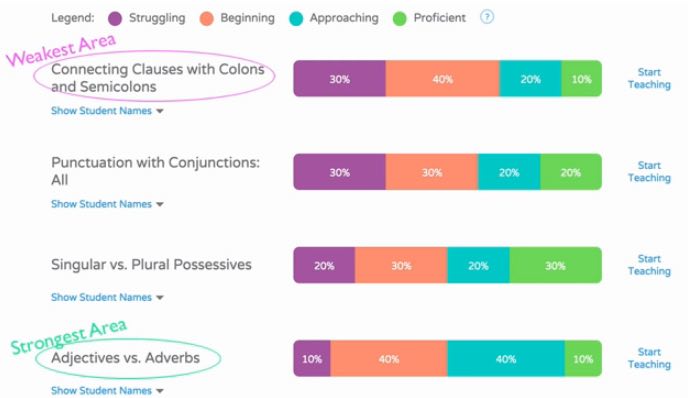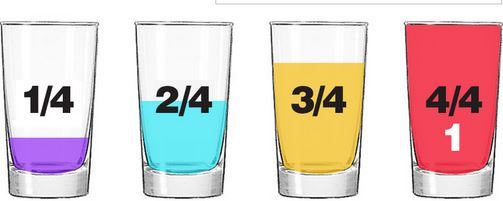
Addressing The Problem with Homework
Many educators are starting to recognize the problem with homework. And while homework is almost universal, there is little evidence that it actually works.

If you or your children spend time in schools, you’ve experienced waves of reforms meant to “fix” education. Whether we are considering Data-Driven Instruction or Response to Intervention, these initiatives have brought fresh ideas to education. Still, there is often a disconnect between how we teach and how students learn. Too often, instead of teaching students or teaching concepts, we end up teaching to the test.
One reason it has been hard to bring about lasting change in our schools is the persistence of granular thinking: we notice a problem and break it down into its component parts. Soon, it is hard to see how the pieces fit together into a sensible whole. We try to understand the beach by looking ever closer at the sand; we struggle to see the forest through the trees.
 In order to give our students the best experience possible, we need to take in the whole picture. Here are three great ideas that, if we are not careful, can trap us into wasting time and losing sight of what students really need: data-gathering, grade-level standards, and lesson planning.
In order to give our students the best experience possible, we need to take in the whole picture. Here are three great ideas that, if we are not careful, can trap us into wasting time and losing sight of what students really need: data-gathering, grade-level standards, and lesson planning.
One popular initiative in schools is to use data to drive instruction. In the past, effective teaching has been hard to measure in an objective way: enter DDI (Data-Driven Instruction).
I’m actually a big fan of DDI. I’ve even written posts on using data to improve instruction. Too often, though, the time needed to gather and interpret data can overwhelm teachers. By the time we’ve gotten through assessment and analysis, students have moved on to another topic and we are unable to take action to respond. When teachers do take action, they might create leveled groupings, but they often do not have time to create activities that are meaningfully tailored to the specific needs of each group.

Meaningful DDI requires a shift in thinking about how we expect students to move through course material (same topics, same pace, etc). DDI also benefits from a digital platform to gather, aggregate, and visualize data. Rating and sorting students may allow us to spend extra time explaining grade level content to those who are struggling, when what they really need is the opportunity to build foundational skills. Platforms like Khan Academy and NoRedInk can save a great deal of time identifying student needs and can also allow students to work on content that is appropriate for them.
Without standards, it would be hard for schools and teachers to decide what to teach each year. There has been a great deal of controversy over how to balance consistency and flexibility in determining grade level expectations. Unfortunately, identifying goals (and breaking them down into small parts) is not the same as actually teaching kids to meet these goals. Trying to understand a symphony by learning the frequency of each note or the type of wood and metal used in each instrument would be crazy! Yet this is exactly what we do when we break down concepts into sub-topics of sub-topics. Then, we turn these sub-sub-topics into lists of lesson objectives that teachers are meant to use in planning their lessons.
For example, I recently worked with a teacher to plan a unit on fractions. The pacing guide called for 6 days on equivalent fractions, followed by 5 days on using multiplication to demonstrate equivalence. Later she would spend 12 days on adding fractions with the same denominator, interspersed with 7 days on equivalence for fractions greater than one. Just looking at the overview practically put me to sleep – I could only imagine how bored and frustrated the students would be!

This is an extreme example of the problem with teaching to the test. Any student with a solid foundation in addition, subtraction and the meaning of fractions does not need this many days of instruction to figure out which fraction is bigger or to add fractions with the same denominator.
My first suggestion was to have students draw pictures of fractions such as 1/2, 1/3, and 1/6. Very few of the students were able to do this accurately – not having done such an assessment, the teacher felt that students needed ‘repetition’ and ‘practice’ to understand the topics. What they really needed was the conceptual foundation to handle the material, along with engaging activities so they would care about the material.
Look for ways to weave multiple standards into each lesson. Ask students to draw a glass of juice after someone has drunk one half of it. Then draw one after someone has drunk one third. Have them explain to each other which has more left. This activity involves subtracting fractions from a whole and comparing fractions with unlike denominators. You could even ask students to draw a square park that is 1/2 mile on each side and figure out how long they’d walk if they went around the edge. That will provide an excellent foundation for when they get to perimeter.
The reality is that concepts are interconnected; when we isolate numeracy from operations or spend days on notation or vocabulary, students struggle to find purpose in the learning. This applies not only to math (imagine trying to explain a noun without being able to discuss verbs), but to most subjects taught in school. When we combine multiple topics, we better approximate real life scenarios; the learning becomes more interesting. Later in the year, we can always weave in previous topics for review and to make sure we have spent enough time addressing each standard.
In some schools, it’s taken for granted that lesson plans are written for administrators, not for actual lessons. Plans can be many pages long and contain all manner of differentiation, hands-on learning, formative assessment, and so on. While it makes sense to plan “a little extra” so you don’t run out of lesson half-way through class, writing a lesson plan that bears little similarity to what will happen in the classroom wastes time and cheats students out of opportunities for meaningful learning
On a recent classroom visit, I found the plans for a 45 minute lesson that contained 8 sections. These included a DoNow, Mini-Lesson, Group Practice, and Exit Ticket. The teacher did his best, racing through each part of the lesson until the students’ heads were spinning. Of course, when it came time for them to demonstrate their learning, they were neither willing nor able to complete their full-page exit ticket in the requisite 4 minutes.
After the lesson, I congratulated the instructor for the useful strategies, but I wondered why he felt it was necessary to incorporate all of them into one lesson. He shared with me the planning template and checklist that would be used during his observation – if he didn’t incorporate all 8 components, he risked a negative rating. Similarly, many have misinterpreted the Gradual Release of Responsibility model to mean that every lesson should contain an “I do,” a “We do,” and a “You do,” section, perhaps overlooking the meaning of Gradual.
Whether we like it or not, learning happens when the brain says it does, not once we have checked all the items off of a ten-step list. It happens naturally when students are interested in what they are learning and they are provided the opportunity to interact with the material or concepts. If we can ignite students’ interest and ask them to complete a challenging activity, authentic learning has a great chance of taking place.
Just like a story, every lesson needs a beginning, middle, and an end. If you start a lesson by showing students why the material is important and how it connects to what they already know or to the world around them, the fire has been lit. Next, rather than “filling them with information,” they should be given a challenge or hands-on activity. Finally, we close the lesson by checking for understanding, and allowing students to share or reflect on the experience.
This isn’t the only way to structure a lesson, but it’s a simple enough one to ensure that our lesson plans don’t get in the way of learning. It also helps us, as teachers, to make sure we don’t end up spending entire class periods talking into the void while our students are confused or disinterested.
While you may take an engine apart to diagnose a problem, you would certainly put it back together before you started to drive it. It’s similarly important to think about the little steps involved in mastering a tough concept or to think about how learning happens in stages. At the same time, we have to always remember what we hope to accomplish, or we risk getting bogged down in details without making meaningful progress toward our goals.
Are you looking for more ways to make data work for you and your students? You’ll find more stories and strategies like this one in our weekly Educator’s Newsletter.
You can also join innovative educators from around the world in our Facebook community. We’re dedicated to bringing creativity, collaboration, and conceptual learning to every student, in every classroom.

Many educators are starting to recognize the problem with homework. And while homework is almost universal, there is little evidence that it actually works.

Does the Danielson Rubric improve teaching? Maybe it’s an unfair question. After all, it’s a rubric, not a training program. But…

Looking for a simple way to identify effective teaching? Consider how you (or your team) are performing in each of these three critical domains.